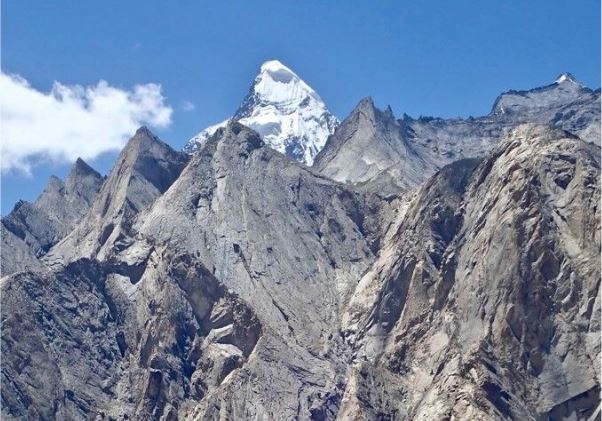- January 28, 2022
Through MISTI Global Seed Funds and MIT-India, Professor Oliver Jagoutz and students have sought to better understand the geology of the Himalayan Mountains.
Seeking understanding in remote locations
The Himalayan mountain range is the result of a collision, many millions of years ago, between the tectonic plates of the Eurasian and Indian continents. However, the exact time-frame and nature of the process remains uncertain. This is due, at least in part, to the vast nature of the Ladakh region of the western Himalayas, in the north of India near the border with China.
With the support of MIT-India and a MISTI Global Seed Fund, Associate Professor of Geology Oliver Jagoutz, has worked with researchers at Kumaon University in Nanital to study the region’s geology. Since 2011, several students have also traveled to Ladakh to collect and analyze core samples. Jade Fischer ’21, a double major in Earth, Atmospheric and Planetary Sciences (EAPS) and Physics, spent 6 weeks collecting core samples to determine the paleolatitude of Ladakh using paleomagnetism in summer 2018. “While in the field, I was able to apply my knowledge of physics and chemistry I’ve learned at MIT to understand the new rock processes I was learning about. My experience doing fieldwork in India has inspired me to pursue field geology as a career and taught me both technical field geology knowledge and valuable lessons in inter-cultural interaction.”
Continued Collaboration
Jagoutz continues to work with Kumaon University as well as with both graduate and undergraduate students. In 2018, he received a Global Seed Fund grant to expand his work to focus on the deeper crust structure of the western Himalayas, the sequence of collision events, and the Karakoram fault. This evolution will build upon existing collaborations between researchers in India and at MIT to form a multi-year collaboration that brings together specialists from across different branches of the earth sciences.
“The Himalayas are the most extreme, beautiful, and fascinating places on the planet,” said Craig Martin, a graduate student studying EAPS, who traveled to Ladakh in summer 2018 as part of a research expedition and will join an additional expedition in summer 2019. “Attempting to understand the immense forces that formed this incredible landscape will become the focus of my PhD and possibly my career.”
